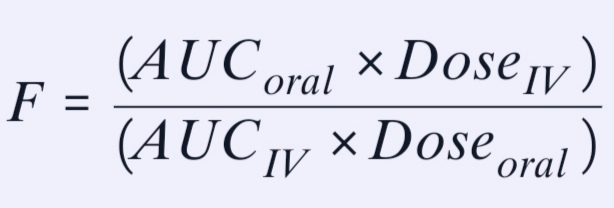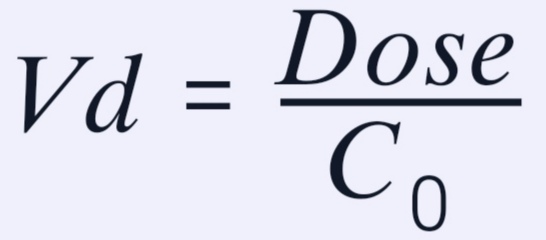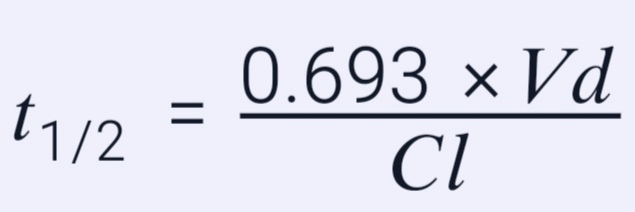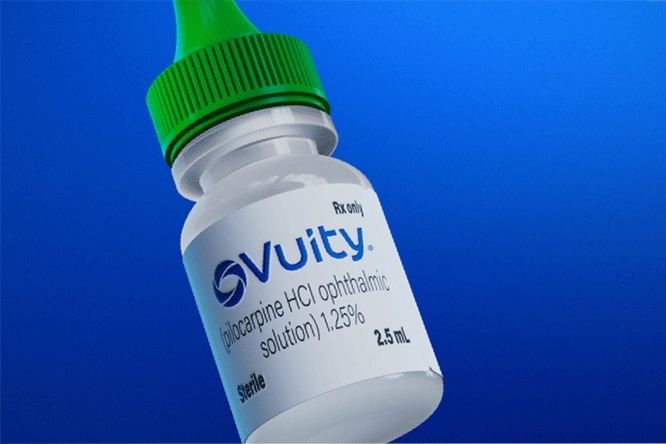
Pharmacology: An Overview
Pharmacology is the branch of medicine and biology that focuses on the study of drugs and their effects on living organisms. It encompasses the understanding of how drugs interact with biological systems, including their chemical properties, mechanisms of action, therapeutic uses, and potential side effects. The field is essential for developing new medications and understanding existing ones, ultimately contributing to improved patient care.
Branches of Pharmacology
- Pharmacognosy
- Pharmacognosy is the study of natural products derived from plants, animals, and minerals that have medicinal properties. This branch focuses on the identification, extraction, and characterization of bioactive compounds found in these natural sources. It plays a crucial role in drug discovery as many modern pharmaceuticals are derived from traditional remedies or natural substances. Pharmacognosy also involves evaluating the safety and efficacy of herbal medicines and understanding their pharmacological actions.
- Pharmacokinetics
- Pharmacokinetics is the study of how an organism affects a drug over time through processes such as absorption, distribution, metabolism, and excretion (often abbreviated as ADME). This branch examines how drugs move through the body after administration and how various factors (e.g., age, weight, health status) influence these processes. Understanding pharmacokinetics helps determine appropriate dosages and schedules for medication administration to achieve optimal therapeutic effects while minimizing toxicity.
- Pharmacodynamics
- Pharmacodynamics explores how drugs exert their effects on biological systems. It involves studying the interactions between drugs and their target receptors or enzymes within cells. This branch seeks to understand the relationship between drug concentration at the site of action and the resulting effect (therapeutic or adverse). Key concepts in pharmacodynamics include dose-response relationships, potency, efficacy, and therapeutic index.
- Pharmacotherapeutics
- Pharmacotherapeutics is concerned with the clinical application of pharmacological principles to treat diseases effectively. It involves selecting appropriate drug therapies based on individual patient needs while considering factors such as disease state, comorbidities, potential drug interactions, and patient preferences. This branch emphasizes evidence-based medicine to optimize treatment outcomes while minimizing risks associated with drug therapy.
- Toxicology
- Toxicology is the study of harmful effects caused by chemicals or drugs on living organisms. It encompasses understanding poison mechanisms, dose-response relationships for toxic substances, risk assessment, and management strategies for poisoning cases. Toxicologists evaluate both acute (short-term) and chronic (long-term) exposures to substances to determine safe exposure levels and develop antidotes or treatments for poisoning.
In summary, pharmacology is a multifaceted discipline that integrates various branches to enhance our understanding of drugs’ roles in health care—from their origins in nature to their therapeutic applications and potential toxic effects.
Principles of Pharmacokinetic Parameters
Pharmacokinetics is the branch of pharmacology concerned with the movement of drugs within the body. It encompasses four primary processes: absorption, distribution, metabolism, and elimination (often abbreviated as ADME). Understanding these principles is crucial for determining how a drug behaves in the body, its efficacy, and its safety profile.
Drug Absorption
Drug absorption refers to the process by which a drug enters the bloodstream from its site of administration. The rate and extent of absorption can be influenced by several factors:
- Route of Administration: Different routes (oral, intravenous, intramuscular, subcutaneous, etc.) have varying absorption rates. For instance, intravenous administration delivers 100% bioavailability immediately into circulation, while oral administration may vary significantly due to first-pass metabolism.
- Physicochemical Properties: The solubility and stability of a drug affect its absorption. Lipophilic drugs tend to be absorbed more readily through cell membranes than hydrophilic drugs.
- Formulation Factors: The formulation of a drug (e.g., tablet vs. liquid) can impact how quickly it dissolves and is absorbed.
- Physiological Factors: Gastric pH, gastrointestinal motility, and presence of food can all influence absorption rates.
- Blood Flow: Increased blood flow to an area can enhance absorption; for example, muscles receive more blood flow than subcutaneous tissues.
The bioavailability (F) of a drug quantifies the fraction that reaches systemic circulation intact after administration and is calculated as:

where AUC represents the area under the concentration-time curve.
Drug Distribution
Once absorbed into the bloodstream, drugs are distributed throughout the body tissues and fluids. Key factors influencing distribution include:
- Blood Flow to Tissues: Organs with high blood flow (like the liver and kidneys) receive drugs more rapidly than those with lower blood flow (like adipose tissue).
- Tissue Binding: Drugs may bind to proteins in plasma (e.g., albumin) or within tissues themselves, affecting their free concentration available for action.
- Volume of Distribution (Vd): This parameter indicates how extensively a drug disperses into body tissues compared to plasma. It is calculated using:

where Co is the initial concentration in plasma after dosing.
- Lipid Solubility: Lipophilic drugs tend to distribute widely into fatty tissues, while hydrophilic drugs remain primarily in extracellular fluid compartments.
- Barriers: Certain barriers like the blood-brain barrier limit drug distribution into specific areas such as the central nervous system.
Drug Metabolism
Metabolism refers to the biochemical modification made by an organism on a chemical compound. Drug metabolism primarily occurs in the liver but can also occur in other tissues such as intestines or kidneys. Key aspects include:
- Phase I Reactions: These involve chemical modifications such as oxidation, reduction, or hydrolysis facilitated by enzymes like cytochrome P450s (CYPs). These reactions often convert lipophilic compounds into more polar metabolites.
- Phase II Reactions: These involve conjugation reactions where metabolites from Phase I are further modified by adding groups like glucuronic acid or sulfate to increase water solubility for excretion.
- First-Pass Metabolism: Drugs administered orally undergo significant metabolism before reaching systemic circulation due to hepatic processing after absorption from the gastrointestinal tract.
- Genetic Variability: Genetic polymorphisms can lead to variations in enzyme activity among individuals affecting drug metabolism rates—this phenomenon is known as pharmacogenomics.
- Enzyme Induction/Inhibition: Certain substances can induce or inhibit metabolic enzymes affecting drug clearance rates; for example, St John’s Wort induces CYP3A4 leading to reduced effectiveness of some medications.
Drug Elimination
Elimination encompasses both excretion and biotransformation processes that remove drugs from systemic circulation:
- Renal Excretion: The kidneys play a major role in eliminating water-soluble drugs through filtration at glomeruli followed by secretion and reabsorption processes along renal tubules.
- Biliary Excretion: Some drugs are excreted via bile into feces after being metabolized in the liver; this route is significant for larger molecules or those undergoing enterohepatic recirculation.
- Half-Life (t½): This parameter indicates how long it takes for half of a drug’s concentration to be eliminated from plasma and helps determine dosing intervals:

where Cl represents clearance rate.
- Clearance (Cl): This reflects how efficiently a drug is removed from circulation and can be defined for various organs or overall body clearance based on volume per time unit (e.g., mL/min).
- Factors Influencing Elimination: Age, sex, disease states (especially liver and kidney function), and interactions with other medications can significantly alter elimination rates.
In summary, understanding these pharmacokinetic parameters—absorption, distribution, metabolism, and elimination—is essential for optimizing therapeutic regimens and minimizing adverse effects associated with pharmacotherapy.
Physicochemical and Physiological Factors Influencing Drug Absorption, Distribution, Metabolism, and Elimination
1. Absorption of Drugs
The absorption of drugs from enteral (oral) and parenteral (injection) routes is influenced by various physicochemical and physiological factors:
- Physicochemical Factors:
- Solubility: The solubility of a drug in biological fluids is critical for its absorption. Drugs must be dissolved to cross biological membranes. For example, lipophilic drugs tend to be better absorbed through lipid membranes.
- Molecular Size: Smaller molecules generally diffuse more easily across cell membranes compared to larger molecules.
- Ionization: The pH of the environment affects the ionization state of a drug, which in turn influences its permeability. According to the Henderson-Hasselbalch equation, weak acids are more readily absorbed in acidic environments (like the stomach), while weak bases are better absorbed in alkaline environments (like the intestines).
- Formulation: The formulation of a drug (e.g., tablet, capsule, solution) can affect its dissolution rate and subsequently its absorption.
- Physiological Factors:
- Gastrointestinal Motility: The rate at which food moves through the gastrointestinal tract can influence drug absorption. Faster transit times may reduce absorption due to less time for the drug to dissolve and be absorbed.
- Blood Flow: Increased blood flow to the site of absorption enhances drug uptake. For instance, areas with high vascularity (like the small intestine) facilitate greater absorption than less vascularized areas.
- Surface Area: The surface area available for absorption plays a significant role; for example, the extensive villi and microvilli in the small intestine provide a large surface area for drug uptake.
2. Distribution of Drugs
Once absorbed into systemic circulation, drugs are distributed throughout the body based on several factors:
- Physicochemical Factors:
- Lipophilicity: Lipophilic drugs tend to accumulate in fatty tissues, while hydrophilic drugs distribute more evenly in body fluids.
- Protein Binding: Many drugs bind to plasma proteins (e.g., albumin). Only unbound (free) drugs can exert pharmacological effects or be eliminated from the body.
- Physiological Factors:
- Blood Flow Distribution: Organs with higher blood flow receive more drug initially (e.g., liver, kidneys). This affects how quickly a drug reaches its site of action.
- Tissue Permeability: The ability of a drug to penetrate tissue barriers varies; for example, the blood-brain barrier restricts many substances from entering the central nervous system.
3. Metabolism of Drugs
Drug metabolism primarily occurs in the liver but can also take place in other tissues such as the intestines and kidneys. It involves biochemical transformations that convert lipophilic compounds into more hydrophilic metabolites that can be excreted:
- Phase I Reactions: These involve modification reactions such as oxidation, reduction, or hydrolysis facilitated by enzymes like cytochrome P450s. These reactions often introduce or expose functional groups on the drug molecule.
- Phase II Reactions: These involve conjugation reactions where metabolites from Phase I are linked with endogenous substrates (e.g., glucuronic acid) to form water-soluble compounds that are easier to eliminate.
Factors influencing metabolism include:
- Genetic polymorphisms affecting enzyme activity,
- Age-related changes in enzyme expression,
- Presence of other substances that may inhibit or induce metabolic enzymes.
4. Mechanisms of Elimination
Elimination refers to how drugs are removed from the body and primarily occurs via renal excretion or hepatic metabolism:
- Renal Excretion:
- Drugs are filtered through glomeruli in kidneys; factors affecting this include urine pH (which influences ionization), renal blood flow, and glomerular filtration rate.
- Biliary Excretion:
- Some drugs are excreted into bile after hepatic metabolism and eliminated via feces.
Overall elimination mechanisms ensure that active drugs do not accumulate excessively within systemic circulation.
In summary, understanding these physicochemical and physiological factors is crucial for predicting how different drugs behave within biological systems following administration via enteral or parenteral routes.
Factors Affecting Plasma Concentrations of a Drug
The plasma concentration of a drug after administration is influenced by several pharmacokinetic parameters, including dose, bioavailability, rate of absorption, apparent volume of distribution (Vd), total clearance (Cl), and elimination half-life (t1/2). Each of these factors plays a critical role in determining how much of the drug reaches systemic circulation and how long it remains in the body. Below is a detailed explanation of each factor and its impact on plasma concentrations.
1. Dose
The dose refers to the amount of drug administered to a patient. Generally, an increase in the dose will lead to higher plasma concentrations, assuming all other factors remain constant. This relationship is often linear for many drugs within therapeutic ranges; however, it can become nonlinear at higher doses due to saturation of metabolic pathways or transport mechanisms.
For example, if a drug has a recommended dose of 100 mg and is administered at this level, the resulting plasma concentration will be predictable based on its pharmacokinetic properties. If the dose is increased to 200 mg, one would expect the plasma concentration to approximately double, provided that there are no changes in absorption or clearance mechanisms.
2. Bioavailability
Bioavailability (F) is defined as the fraction of an administered dose that reaches systemic circulation in an unchanged form. It varies significantly between different routes of administration (e.g., oral vs. intravenous). For instance, intravenous administration typically results in 100% bioavailability because the drug directly enters systemic circulation.
In contrast, oral medications may have lower bioavailability due to first-pass metabolism in the liver or incomplete absorption from the gastrointestinal tract. If a drug has a bioavailability of 50%, only half of the administered dose contributes to plasma concentrations. Therefore, understanding bioavailability is crucial for predicting how much active drug will enter circulation after administration.
3. Rate of Absorption
The rate at which a drug is absorbed into systemic circulation affects how quickly it reaches peak plasma concentrations (Cmax). Factors influencing absorption include formulation characteristics (e.g., immediate-release vs. extended-release), presence of food in the stomach, and blood flow to the absorption site.
A faster rate of absorption leads to quicker increases in plasma concentration and can result in higher peak levels if not countered by rapid clearance mechanisms. Conversely, slower absorption may lead to delayed onset of action but can also prolong therapeutic effects as steady-state concentrations are achieved more gradually.
4. Apparent Volume of Distribution (Vd)
The apparent volume of distribution describes how extensively a drug disperses throughout body tissues relative to plasma volume. A high Vd indicates that a large portion of the drug has moved into tissues rather than remaining in circulation.
For example, if a drug has a Vd significantly greater than blood volume (approximately 5-6 liters for an adult), it suggests extensive tissue binding or accumulation outside the vascular compartment. This affects plasma concentration because even with high doses, if most drug resides within tissues rather than circulating blood, measured plasma levels may be lower than expected.
5. Total Clearance (Cl)
Total clearance refers to the volume of plasma from which a substance is completely removed per unit time and encompasses all elimination processes: hepatic metabolism and renal excretion being primary routes for many drugs.
High clearance rates reduce plasma concentrations more rapidly as they indicate efficient removal from circulation; thus, maintaining therapeutic levels may require more frequent dosing or higher doses overall. Conversely, low clearance rates can lead to accumulation and potentially toxic levels if dosing intervals are not appropriately adjusted.
6. Elimination Half-Life (t1/2)
Elimination half-life is defined as the time required for the plasma concentration of a drug to reduce by half after reaching peak levels. It provides insight into how long a drug remains active within the system before significant elimination occurs.
Drugs with longer half-lives remain in circulation longer and can maintain therapeutic effects without frequent dosing; however, they also pose risks for accumulation if dosages are not carefully managed. In contrast, drugs with short half-lives require more frequent administration but may minimize risks associated with prolonged exposure.
Conclusion
In summary, each pharmacokinetic parameter—dose, bioavailability, rate of absorption, apparent volume of distribution, total clearance, and elimination half-life—interacts intricately to determine plasma concentrations following drug administration. Understanding these factors allows healthcare professionals to optimize dosing regimens tailored for individual patient needs while minimizing adverse effects and maximizing therapeutic efficacy.







